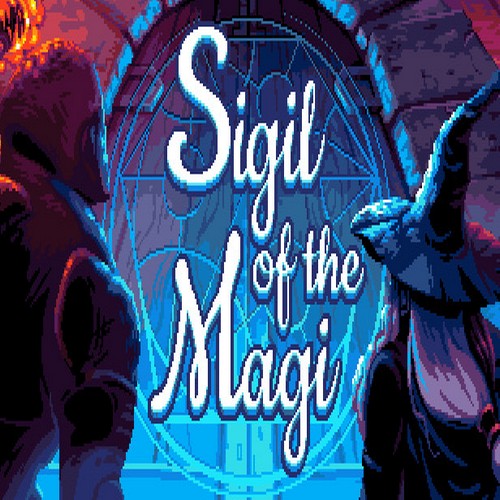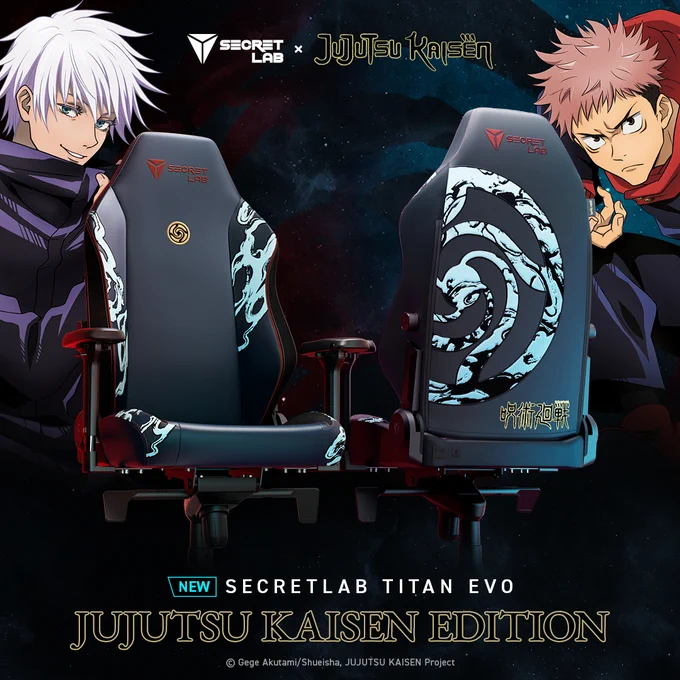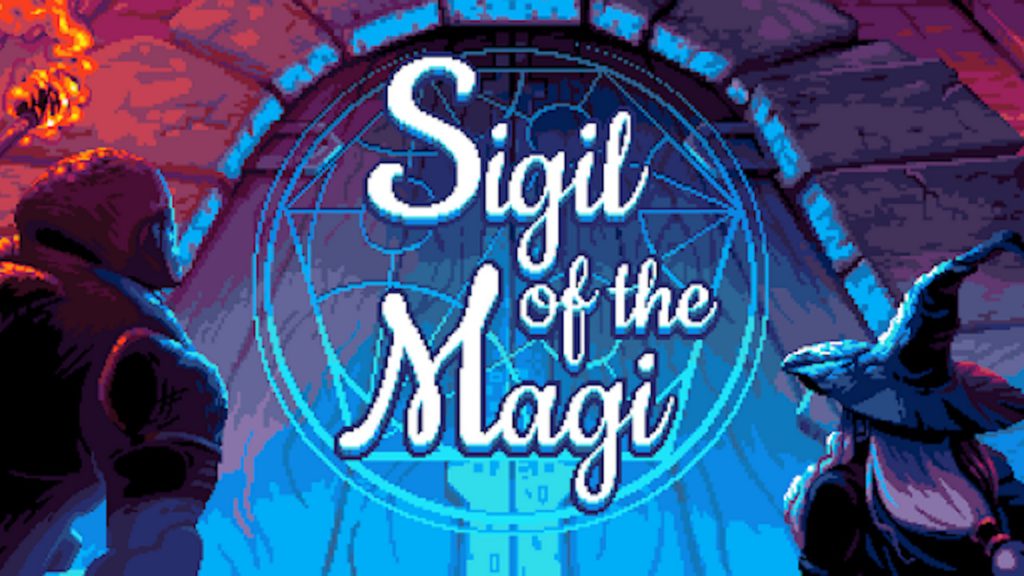
Dungeons and Dragons meet roguelike deck builder with turn-based strategy combat, Sigil of the Magi, developed by Yongjustyong and published by The Iterative Collective, released into early access on October 21st, and it is available on the Steam storefront. Within the universe of Sigil of the Magi, there is a fragile peace between the various kingdoms and their co-existing cultures. Multiple rumors have come to light about a tomb discovered by a very powerful and ancient Magi. It is rumored that the tomb and its ruins contain mystical sigils that are almost guaranteed to grant unimaginable powers to those who can obtain them.
Within the lands of Sigil of the Magi, the map is split into 3 paths and these paths are littered with battles, special events, treasure, merchants, and, campsites. Battles are comprised of three styles; standard battles, elite and boss battles. Battlefields are built on randomized grids, where multiple tiles can have buffs, debuffs, or obstacles and traps. Buffs consist of long grass, which increases the heroes’ armor by 4 at the end of a battle phase, or invulnerability tiles.
De-buffs consist of water tiles that inflict invulnerability on the unit standing on the tile, which makes the unit receive 50% more damage, and trap tiles, which can inflict poison, damage, or bleed on the unit standing on the tile. These special tiles increase the tactical play and help ease some of the more rigged battles by allowing you to funnel and cause maximum damage to the enemy units.
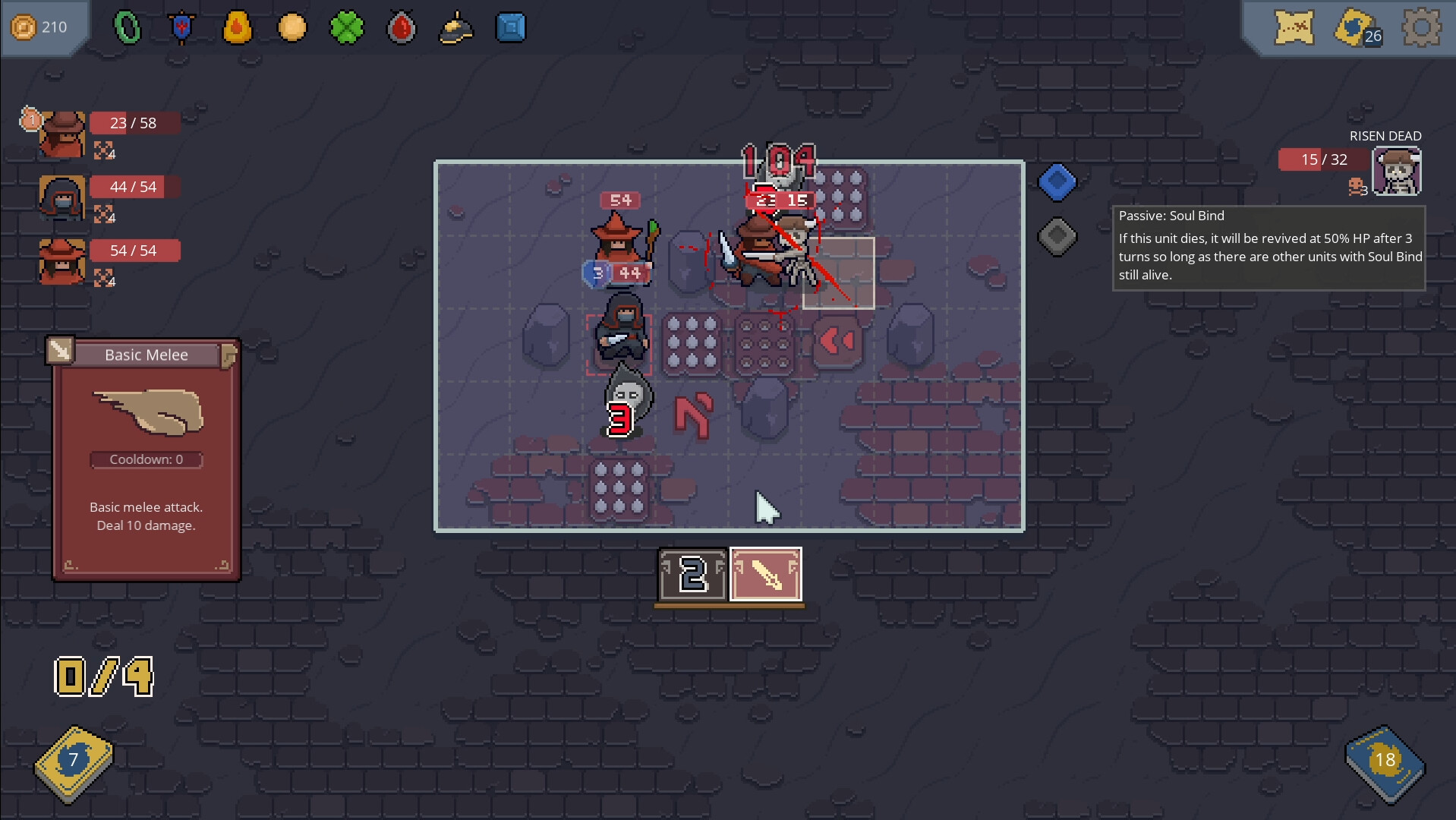
Along your journey, you can encounter special events that will usually help you by acquiring cards, powering up your existing cards, and gaining gold or relics. Relics have a permanent effect on the game and are one of the best additions to your run. Relics can be gained from defeating elites and bosses, found in treasure chests, buying from merchants, and claiming in some events.
At the start of the game, only one party is useable; the Royal Vanguard. This party is filled with an archer, a wizard, and a knight. Each character has passive abilities and when played right, and with the right cards, can make a run so much smoother. The second party, which is unlocked by playing the Royal Vanguard party and gaining enough XP, is the Guild of Shadows. This party comprises a Bounty Hunter, a Rouge, and a Witch. The Royal Vanguard is a basic crew and doesn’t have much complexity. Their cards are mainly based on damage output, and applying armor to oneself or adjacent party members.
The Guild of Shadows, however, has a lot more strategy involved. They base themselves around status effects and damage multipliers around said status effects, The Guild of Shadows quickly grew to become my favorite base party to use. You can, however, mix and match units in a custom party to maximize unit attributes and abilities in a crazy synchronistic rag-tag group of misfits. There is a third party but they are still a work in progress, and I for one am very interested to see what the group at Yongjustyong comes up with!
Now, cards are split among three types; one type for each of your party members. Each type is colour coded, has a range of use, and displays if the card is cast on oneself or within the given range. This color coordination helped simplify and add to the possible strategic moves I could pull off. A card rack is also featured, where by paying the mana cost a card takes to play, you can store that card on the rack for future use.
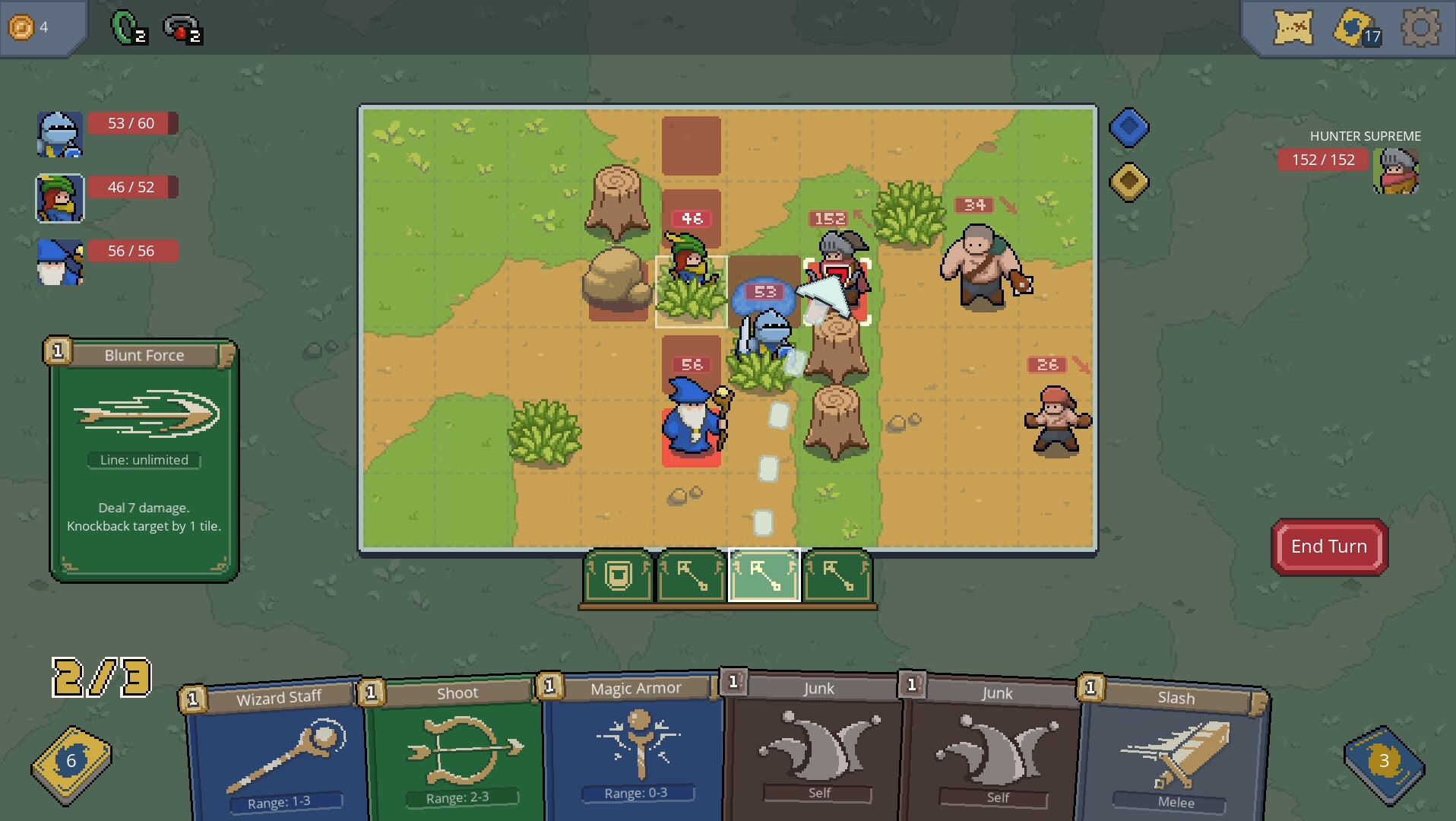
You can play cards from the card rack for free and upgrade the size of the rack through events and relics obtained from beating bosses. The addition of a card rack meant I could spend my early turns on a massive battlefield defensively, storing my melee fighters’ cards on the rack, chipping away with archers and wizards until the enemies got close enough that I could unleash a devastating flurry of blows from the knight.
The game consists of three “worlds” to travel across, each fitted with its own map having 3 paths to travel. Each path intersects at various areas so it’s best to study the paths and plan the direction to travel. Fewer battles and more events could make or break a run. Some base battle encounters felt extremely rigged and harder than boss battles. Trying to counter 7-8 minions with my 3 heroes while being surrounded and overrun was less than ideal and ended many runs.
Boss battles are their very own demon. Huge HP and overpowered abilities, coupled with summoning new troops every so often felt like I was in a constant chess game, fighting for the upper hand to hold power across the battlefield. I did find out a very handy tip though; if the boss or any elite is about to summon troops, you can have a hero stand on the block they are going to appear on, and ultimately, block the summoning. This is all well and good, however, summons usually take 2 turns and the counter starts on the turn the boss/elite uses the ability, so effectively, you have one move to send your heroes over to block. This can prove rather difficult on maps that feature multiple obstacles and are rather large.
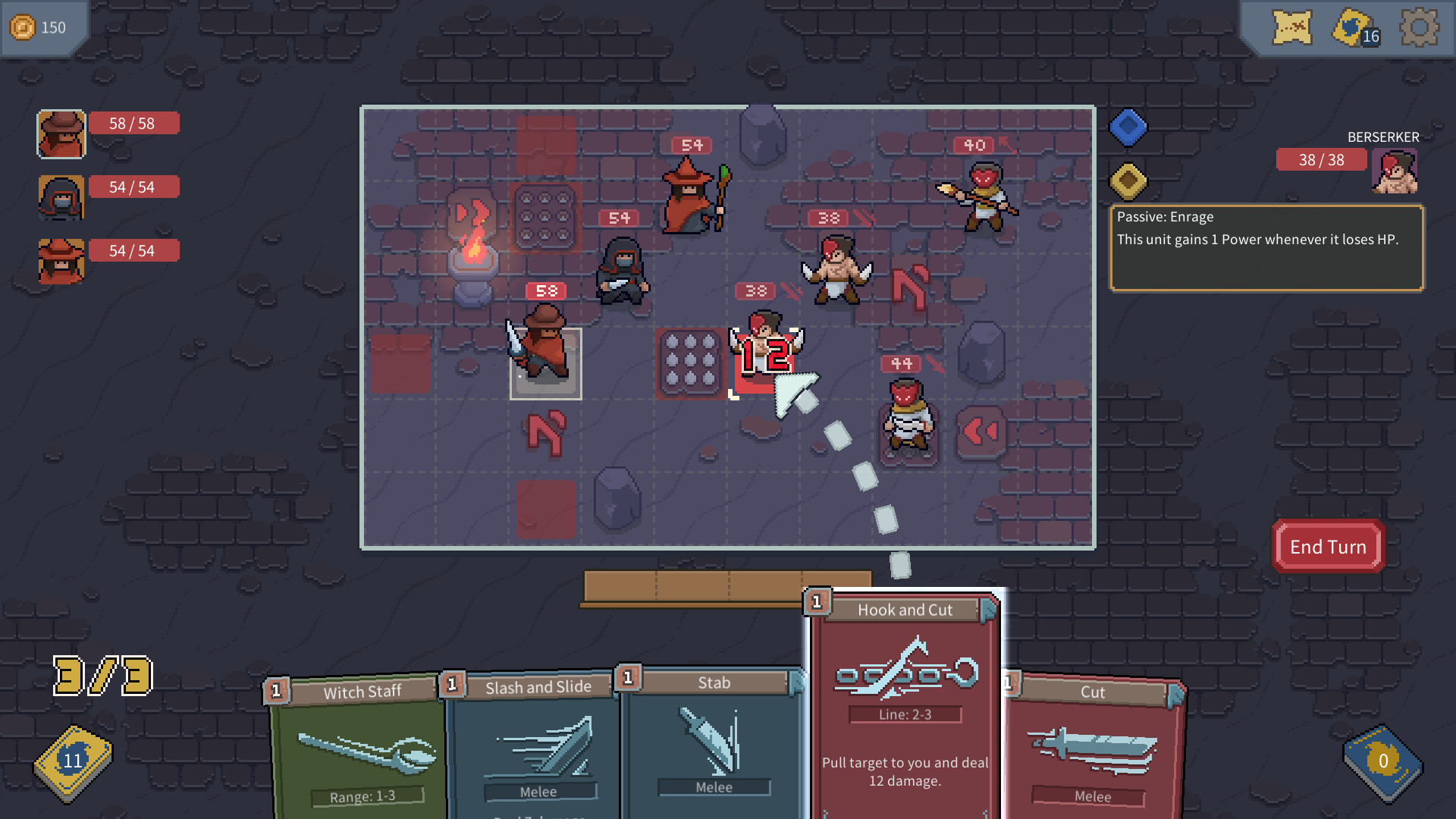
Sigil of the Magi features a super simplistic but effective graphical design. Designed as an 8-bit game, all units had a gif-style animation. Scrolling over special tiles would bring up a small card in the user interface that explained what that tile would do. Clicking on enemy units would display that unit’s status effects, moves, and details in the user interface. Events were static 8-bit images but didn’t take anything away from the graphical flair of the high-action battles. I did encounter some text issues with the card titles when examining them on high resolutions. I run a 1440P monitor and the only way to play in fullscreen using the in-game options is to run your monitor’s native resolution.
This high resolution caused the inspected titles of the cards to be streaky and difficult to read. I found this would only affect the game on 25670x1440P, as opposed to the 1920x1080P and 1280x720P variations I tested across. Being unable to drop the resolution and still have the game in fullscreen was annoying but not the end of the world. Sigil of the Magi’s background music was charming and chill during menus and path selection, but ramped up during battles, and the sound effects were great as well. I ultimately cannot fault the audio and often found myself lost in the background audio.
It seems like deck-builder games are becoming more popular and I’m all for it. I love a good strategic deck-building game where you can create insane combos and strategies with cards. I guess this stems from my trading card addiction as a child. I have recently played a few roguelike deck builders and Sigil of the Magi has to be in the top 3. If you are an enjoyer of turn-based tactics or deck builders, Sigil of the Magi is HIGHLY recommended.

The Good
- High replayability
- Custom Party Creation
- High tactical gameplay
- Easy to understand card system
The Bad
- Some battles are rigged
- Visual text issues on cards

